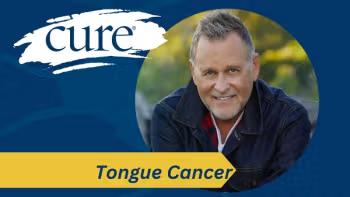
Findings About Children's Solid Tumors Are Sparking New Therapies
The Childhood Solid Tumor Network at St. Jude is helping scientists inside and outside the hospital’s walls to expand treatment options for youngsters with these cancers.
Compared with solid tumors in adults — about which scientists are learning more and more — those that occur in children are mysteries. Not only are pediatric tumors rare, but they arise in developing tissues, making them difficult to study and treat.
That’s where the Childhood Solid Tumor Network (CSTN), run by St. Jude Children’s Research Hospital with support from the Howard Hughes Medical Institute, comes in.
In recent years,
Through the
While pediatric cancer is about 83 percent curable across the board and pediatric leukemia has around a 95 percent cure rate, solid tumors — which represent one-third of all children’s cancers — have lower cure rates, according to St. Jude oncologist Alberto Pappo, M.D. “The survival curves for most children who present with advanced solid tumors have not significantly changed over the past 30 years,” Pappo said. He added that, when solid tumors recur, the survival rate for pediatric patients drops to 20 percent, so a major goal of researchers is to find medicines that can prevent recurrence.
Finally, he said, at least half the pediatric patients treated for sarcomas will experience severe, disabling, chronic side effects attributed to therapy, so finding less toxic drugs for these diseases “would be a big accomplishment.”
CSTN was started in 2013 as a collaborative effort with Pappo, director of St. Jude’s Solid Tumor Division and co-leader of its Developmental Biology and Solid Tumor Program; Michael Dyer, Ph.D., a
The network started in parallel with St. Jude’s Pediatric Cancer Genome Project, with an aim of determining how findings from that effort could be studied in the lab, Dyer said. At its heart, the CSTN involves growing patient tumor cells and tissue so that scientists at St. Jude and beyond can study it — in some cases by implanting human cancers into mice and then treating the animals with anticancer drugs. If the genome project has revealed that certain genetic mutations contribute to a specific cancer type, the team will treat with medications that target those abnormalities.
So far, more than 500 patients have consented to donate tumor tissue to the CSTN, and 200 of the samples, representing two dozen cancer types, have been cultivated — some of them rare and with no other known means for laboratory study.
In one example, the lab has been growing a sample of the rare bone cancer Ewing sarcoma taken from a pediatric patient. “Because cancer cells are immortal, we can let it grow continuously. These tumor cells become a resource we can utilize for future studies as new drugs become available,” said Stewart, an oncologist who treats patients and leads solid tumor translational studies at St. Jude.
In some cases, these laboratory models give rise to clinical trials — and, occasionally, a medical victory.
One win occurred after Dyer’s team discovered that a drug approved to treat BRCA gene mutation-positive, metastatic breast cancer — the PARP inhibitor Talzenna (talazoparib) — seemed effective against Ewing sarcoma cells in the lab. Team members knew that drug combinations tend to be more successful than single agents in treating solid tumors, and so they looked for a medication to pair with Talzenna. Their investigation revealed that the chemotherapy irinotecan seemed to boost responses.
This led to a phase 1 clinical trial of Talzenna and irinotecan that sparked complete responses in two of 22 evaluable patients with recurrent solid tumors. Nine more patients in the trial experienced stable disease while taking the drugs.
One of the responders was a patient with recurrent Ewing sarcoma whose outcome delighted Federico, an oncologist who treats patients, works with Dyer and Stewart to move therapies from the lab into clinical trials, and was the principal investigator on the phase 1 study.
The patient “is 15 months cancer-free after the phase 1 study that started in this lab,” Federico said. “She gets to act like a very unruly teenager who’s driving her parents crazy, and that’s their biggest issue now — it’s not the cancer.”
Another success for the lab was its combination of treatments for pediatric patients with recurrent neuroblastoma, the most common extracranial solid tumor in children. Chemotherapy has long been a treatment for this disease, and, over the past decade, a drug targeting the cancer-driving protein GD2 — found on the surface of pediatric neuroblastoma cells — has been used after treatment to help maintain response. Federico and another member of the team, Wayne Furman, M.D., wanted to find out if combining a similar drug with chemotherapy would improve outcomes in children with neuroblastoma that has recurred or become resistant to treatment. The two conducted the first pilot trial that combined these two therapy types, adding immunotherapy to help boost their effectiveness.
“A COG (Children’s Oncology Group) study confirmed that this approach was feasible and improved outcomes in patients with relapsed disease,” Pappo said. “Our team then conducted a trial for newly diagnosed patients with high-risk neuroblastoma combining (the targeted drug, known as an antibody), with chemotherapy, which demonstrated the feasibility and efficacy of this approach. Given the promising results, the COG has now activated a pilot trial with antibody and chemotherapy for patients with newly diagnosed high-risk neuroblastoma, and Federico is the national principal investigator for this trial.”
Stewart emphasized that St. Jude wants to share its findings and samples with as many scientists as possible.
“In research, you typically keep things to yourself until you are able to publish your findings,” she said. “Here, as soon as we discover something, we want to share it quickly, if it could benefit kids. We get requests every week and ship samples across the world. We want to encourage others to make discoveries in their own labs based on our samples. It’s free, and we don’t expect any credit.”
“We’re motivated by our patients and the struggle of not always having the right answers,” Stewart continued. “It humbles us all daily.”
The Howard Hughes Medical Institute, in Maryland, is a science philanthropy that empowers exceptional scientists to advance biomedical research and science education for the benefit of humanity.
St. Jude is the first and only National Cancer Institute-designated comprehensive cancer center devoted exclusively to children. Its mission is to advance prevention and cures for children’s catastrophic diseases through research and treatment. No family ever pays a bill for treatment at St. Jude.




